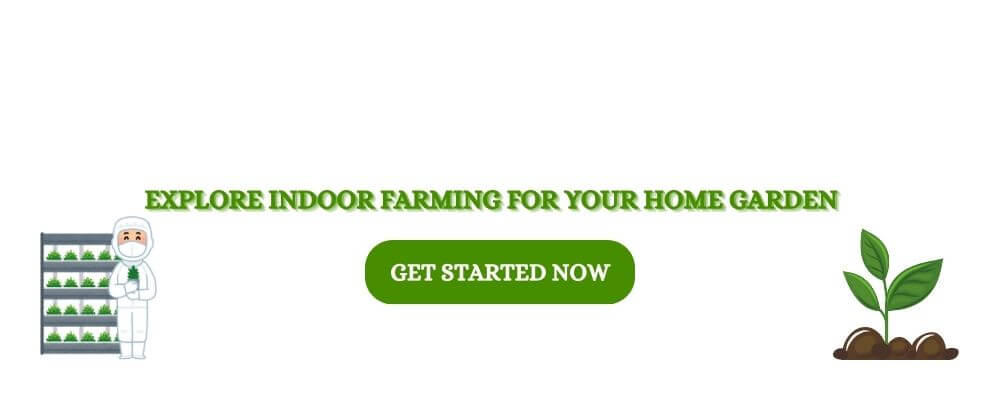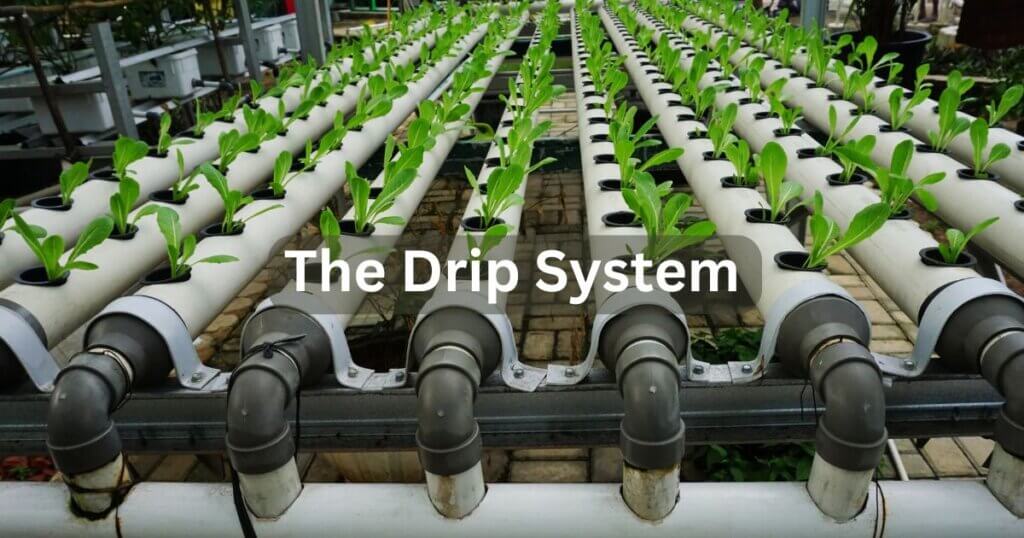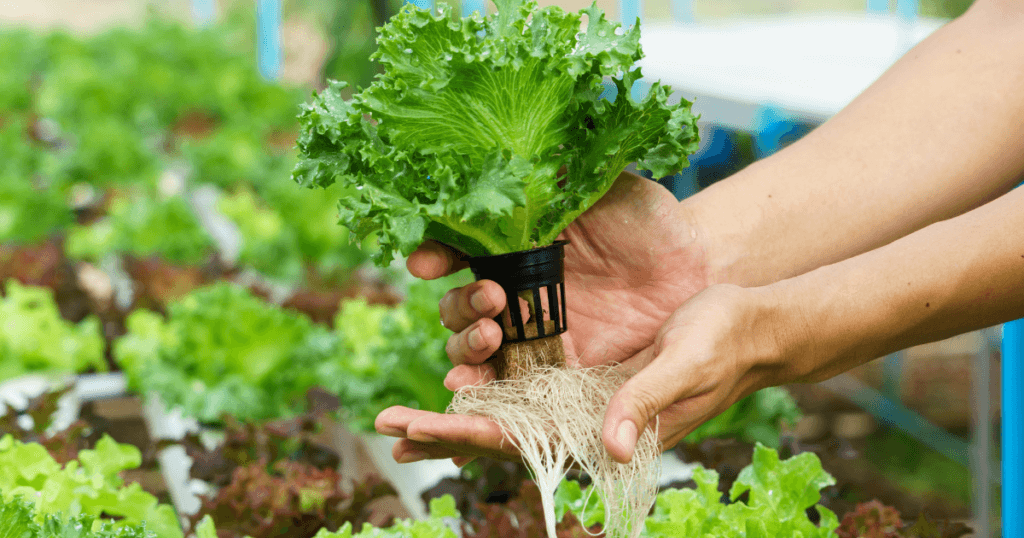The Basics of Hydroponic Farming in 2023

Some of the links in this post are affiliate links. As an Amazon Associate, we earn a referral fee from qualifying purchases—at no extra cost to you.
Hydroponic farming has emerged as a groundbreaking agricultural practice revolutionizing how we grow crops. This innovative technique eliminates the need for soil and enables plants to thrive in a nutrient-rich water solution. With its numerous advantages and potential for sustainable food production, hydroponic farming is gaining momentum worldwide. In this blog post, we will delve into the concept of hydroponic farming, explore its benefits, and provide valuable insights into implementing this technique for successful cultivation.
What is Hydroponic Farming?
Hydroponic farming involves cultivating plants in a controlled environment without using soil. Instead, plants are grown in an inert medium such as perlite, vermiculite, or coconut coir, supporting the roots. The plants receive essential nutrients through a water-based solution, which is meticulously balanced to ensure optimal growth.
Benefits of Hydroponic Farming
Hydroponic farming offers several key advantages over traditional soil-based agriculture:
- Higher Yield: Hydroponic systems provide plants with ideal growing conditions, resulting in higher yields than conventional farming methods.
- Water Efficiency: Hydroponics uses up to 90% less water than traditional soil-based agriculture. The closed-loop system recirculates water, minimizing wastage.
- Space Optimization: Hydroponic systems can be set up vertically, maximizing land use efficiency; this is particularly beneficial in urban areas or regions with limited arable land.
- Year-Round Cultivation: With hydroponics, farmers can grow crops throughout the year, unaffected by seasonal changes; this allows for a steady and reliable supply of fresh produce.
Implementing Hydroponic Farming Techniques
To set up a successful hydroponic farm, it is important to understand and implement the following techniques:
Essential Components of a Hydroponic System
- Reservoir: A container to hold the nutrient solution.
- Growing Medium: An inert material that supports the plants’ roots and allows proper drainage.
- Nutrient Solution: A balanced mixture of essential nutrients dissolved in water.
- Pump and Irrigation System: To deliver the nutrient solution to the plant’s roots.
- Lighting: Artificial lighting, such as LED grow lights, provides the necessary spectrum for photosynthesis.
- pH and EC Meters: To monitor and maintain the pH and electrical conductivity of the nutrient solution.
The General Hydroponics WaterFarm Complete Kit provides everything needed to get started, including a reservoir, grow chamber, drip system, and air pump, making it perfect for beginners looking to build a functional hydroponic system with ease.
The VIVOSUN VS2000 LED Grow Light delivers full-spectrum lighting essential for all stages of plant growth while being energy-efficient, making it ideal for maintaining healthy crops in an indoor hydroponic setup.
The Bluelab Combo Meter is a professional-grade tool that accurately measures pH, electrical conductivity (EC), and temperature, ensuring your hydroponic nutrient solution stays balanced for optimal plant health.
Coco Bliss Premium Coconut Coir Pith is a sustainable, organic growing medium that supports strong root development, enhances water retention, and is ideal for hydroponic setups requiring an inert substrate.
Hydroponic Farming Methods
- Deep Water Culture (DWC): Plants suspended in a nutrient-rich solution have their roots submerged in water.
- Nutrient Film Technique (NFT): A thin film of nutrient solution flows continuously over the roots, providing a constant supply of nutrients.
- Ebb and Flow: Plants are periodically flooded with the nutrient solution, draining back into the reservoir.
- Drip System: The nutrient solution drips onto the plants’ roots through tubes and emitters.
Nutrient Solutions for Optimal Plant Growth
The nutrient solution in hydroponic farming must contain a balanced mix of essential elements, including nitrogen, phosphorus, potassium, calcium, magnesium, and trace minerals. Pre-made nutrient solutions or custom formulations can ensure plants receive nutrients for healthy growth.
The General Hydroponics Flora Series Nutrient Pack offers a complete 3-part nutrient system that supports all growth stages and is widely trusted for hydroponic farming, helping ensure robust plant development.
Maintaining Proper pH Levels
Maintaining the correct pH level of the nutrient solution is crucial for plant nutrient absorption. Most hydroponic crops thrive in a pH range of 5.5 to 6.5. Regular monitoring and adjustment of pH using pH buffers or acid/alkali solutions are necessary to optimize plant growth.
Common Hydroponic Crops
A wide range of crops can be grown using hydroponic farming, including leafy greens (lettuce, spinach, kale), herbs (basil, mint, parsley), tomatoes, cucumbers, peppers, strawberries, and even certain root vegetables like radishes and carrots.
Environmental Sustainability and Hydroponics
Hydroponic farming aligns with the principles of environmental sustainability in several ways:
- Reduced Water Consumption: Hydroponics conserves this precious resource by using water more efficiently and minimizing wastage.
- Land Conservation: Vertical hydroponic systems optimize space utilization, reducing the need for vast expanses of land for cultivation.
- Limited Chemical Usage: Hydroponic systems can significantly reduce the need for pesticides and herbicides, promoting environmentally friendly farming practices.
Challenges and Solutions in Hydroponic Farming
While hydroponic farming offers numerous benefits, there are challenges that farmers may encounter. Here are some common challenges and their solutions:
Pest and Disease Management
Due to the controlled environment, hydroponic systems are generally less prone to pests and diseases. However, preventive measures such as regular system cleaning, sterile growing media, and implementing integrated pest management strategies are crucial to mitigate potential issues.
Energy Efficiency in Hydroponics
The energy consumption of hydroponic systems, particularly for lighting and climate control, can be a concern. To enhance energy efficiency, farmers can opt for energy-saving LED lights, employ timers to regulate lighting hours, and use insulation to minimize heat loss.
Water Conservation in Hydroponic Systems
While hydroponics already reduces water usage compared to traditional farming, farmers can further optimize water conservation by implementing water-recycling systems, monitoring and minimizing water loss, and using water-efficient irrigation techniques.
The Hydrofarm Active Aqua Submersible Water Pump is essential for efficiently circulating nutrient solutions in a closed hydroponic system, contributing to better water conservation and healthier plants.
Future Potential of Hydroponic Farming
The future of hydroponic farming looks promising as advancements in technology and research continue to enhance the efficiency and sustainability of this agricultural practice. Areas of potential growth include:
- Integration with Renewable Energy: Combining hydroponics with renewable energy sources can further reduce hydroponic farms’ environmental impact and operational costs.
- Automation and AI: Automation and artificial intelligence can streamline hydroponic operations, improving efficiency and precision in monitoring and adjusting environmental parameters.
- Expansion in Urban Agriculture: Hydroponics is well-suited for urban environments, and its growth is expected to contribute significantly to local food production and food security.
Conclusion
Hydroponic farming presents an exciting opportunity to transform agriculture into a more sustainable and efficient practice. By harnessing the power of hydroponics, we can cultivate fresh and nutritious produce year-round, minimize water consumption, optimize land use, and reduce reliance on harmful chemicals. As technology advances and awareness of environmental issues grows, hydroponic farming is set to play a crucial role in ensuring food security and safeguarding our planet for future generations. Embrace hydroponics today and join the movement towards a greener, more sustainable future.
FAQs – Hydroponic Farming
1. Can hydroponic farming be done at home?
Yes, hydroponic farming can be set up at home using small-scale systems like Kratky, Deep Water Culture (DWC), or nutrient film techniques (NFT). Home hydroponics kits are available for beginners, allowing them to grow herbs, leafy greens, and small vegetables indoors with minimal space.
2. How does hydroponic farming compare in cost to traditional farming?
While the initial setup cost of hydroponic farming is higher due to the need for specialized equipment, long-term operational costs can be lower. Hydroponic systems save water, reduce fertilizer waste, and optimize space, leading to higher efficiency and potentially greater profits.
3. Do hydroponic plants taste different from soil-grown plants?
The taste of hydroponic plants is influenced by nutrient composition and growing conditions rather than the presence of soil. Many hydroponic crops are known to have a cleaner, fresher taste since they are not exposed to soil contaminants and can be grown under ideal conditions.
4. What types of pests or diseases affect hydroponic crops?
Although hydroponic farming reduces the risk of soil-borne pests and diseases, plants can still be affected by fungal infections, algae growth, and airborne pests like aphids and whiteflies. Proper sanitation, air circulation, and biological pest control methods help manage these risks.
5. Can organic farming principles be applied to hydroponics?
Organic hydroponics is a debated topic, as traditional organic farming relies on soil-based ecosystems. However, some hydroponic farmers use organic nutrient sources, compost teas, and biological pest control to align with organic principles. Certification for organic hydroponic produce varies by region.
Other Useful Sites Related To Hydroponic Farming
- Hydroponics – Wikipedia
This comprehensive article offers an in-depth overview of hydroponic systems, exploring various techniques such as Deep Water Culture, Wick Systems, and Nutrient Film Technique. It discusses the principles behind hydroponics, benefits, challenges, and applications in modern agriculture. - Kratky Method – Wikipedia
This page details the Kratky Method, a passive hydroponic technique that requires no electricity or pumps. It describes how plants are suspended above a nutrient reservoir, allowing roots to access nutrients and oxygen naturally as the water level decreases. - Hydroponic Gardening Is the Key to Year-Round Indoor Growing – The Spruce
This article introduces hydroponic gardening as a method of growing plants without soil, providing water and nutrients directly to the roots. It discusses various soilless mediums and the benefits of indoor hydroponic systems for year-round cultivation, especially in limited spaces or cold climates. - LEDs and basil leaves: Urban farming pilot program blossoms in Glens Falls – Times Union
This piece highlights an urban farming initiative in Glens Falls, where hydroponics and LED lighting are used to grow basil and other greens in a 480-square-foot indoor space. The project demonstrates how hydroponic systems can maximize growth and production with minimal resources and space. - Why Our Produce Could Soon Be Grown in Total Darkness – Food & Wine
This article explores electro-agriculture, an innovative farming technology that allows crops to be grown without sunlight, soil, or large amounts of land. It discusses how solar-powered chemical reactions can convert carbon dioxide into organic molecules that plants can utilize, enhancing photosynthesis in complete darkness.










